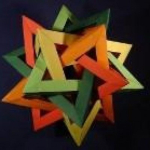Вот тут: https://www.khronos.org/surveys/index.php/929633/lang-en
Там короткий опросник и опционально предложения по развитию. Если есть желание как-то повлиять на развитие OpenGL, можно поучаствовать. Наиболее ретивые имеют шанс попать в рассылку glnext, если захотят.
Я написал примерно следующее:
1) Improve debugging and profiling. Sadly, but today OpenGL platform is fragmented a lot and every vendor develops their own tools and SDK and they mostly lock to a single operating system. And they not good as DirectX tools. I hope in OpenGL Next we will have one good tool maintained by Khronos Group what works across all vendors and major operating systems. I imagine it as open source tool like QtCreator or Krita. Maybe it is not best programs in the world but a good examples of modularized software. Both programs have little core and all functional is appended with compile-time plugins. So every interesting person from community or vendor will allowed to add features they need. Look at Crytek Renderdoc or AMD GPU PerfStudio. It is realy good and feature-rich programs. I hope OpenGL Next will have tools like it. But it depends of vendors, if they ready to cooperate and help. 2) Low level stuff. I'm not guru of AAA level OpenGL development but all this stuff with more explicit control of resources looks interesting. Virtual textures and buffers, persistent mapping, indirect draw, upcoming NVidia's command lists and conservative raster, explicit multisampling locations, AMD's extended stencil ops and atomic counters ops, etc. All of this already included in OpenGL Next, right? Anyway people from Epic Games, Unity and others have more experience with low level graphics programming (PS3, metal, etc) and have better API design ideas. 3) Direct state access. As in OpenCL. Nuff said. 4) Explicit DMA engine access. Modern GPU have several DMA engines and in classic OpenGL it depends of implementation is upload/readback data with PBO will use this engines or not. I hope in OpenGL Next we will have API to contol our data transfers. 5) Shading language. Classic GLSL is not worst language, but good old C99 is better. GPGPU languanges and for example Metal shading language (it's based on C++11 but anyway) from Apple is great step forward. Offline shader compiler what works acorss all vendors is needed of course. 6) Improve conformance tests. Piglit-like stuff from Mesa open source drivers what checks every aspect of graphics API and shaders is vital. I heard somewhere what Microsoft have software rasterizer for their DX APIs (don't known is it truth or not) and every vendor compares their implementations with this rasterizer. Once again it good if this tests will available to open source and everyone can contribute to it. 7) No more undefined behavior. Classic OpenGL have a lot of undefined behaviors and vendors interprets it differently. Specification of OpenGL Next should be interpreted unambiguously. Thanks for your work!Да, мой английский не самый крутой. Вобщем, если есть желание дерзайте.

